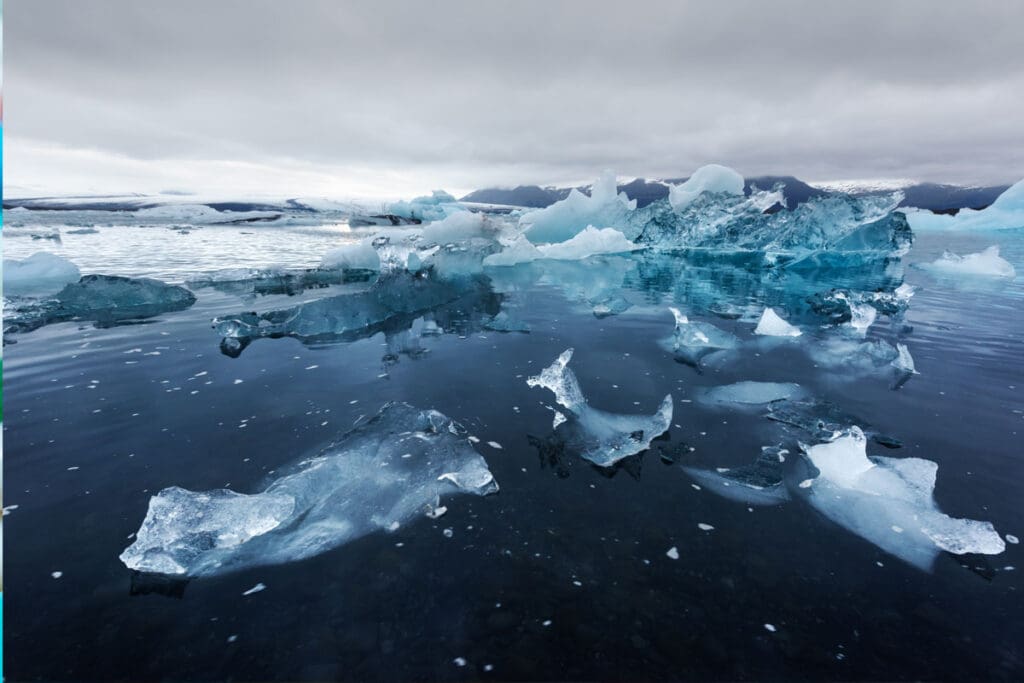
Since 1997, scientists have struggled to identify the source of an eerie sound that emanated deep from the belly of the earth’s oceans. They named this super low-frequency sound the “bloop.” Finally, scientists know what it is.
Mysterious Deep Ocean Sound Discovered
In 1997, an extremely low-frequency sound echoed deep within the belly of the Earth’s oceans. This mysterious sound was detected by two arrays of hydrophones over a range at least 5,000 kilometers (about 3,100 miles) apart.
It should be noticed that hydrophones (underwater microphones) are actively deployed around the world’s oceans for various purposes. For example, 9 hydrophones are deployed in the Indian Ocean as part of a treaty banning nuclear weapons tests. Hydrophones are capable of recording extremely low frequencies and infrasound. They have recorded many unexplained ocean sounds.
In a way, this mysterious undersea noise was an undulating sound reminiscent of a whale. Scientists nicknamed the sound the “Bloop.” The Bloop is an onomatopoeia, a word that imitates, resembles, or suggests the sound it describes. For example, “hiss” and “boom” are onomatopoeias. The Bloop sounded like some oscillation of bubbly liquid.
Since the mysterious sound was first discovered, an array of various scientists from a wide range of disciplines have worked on trying to identify its source. Oceanographers, physicists, volcanologists, seismologists, geologists, military analysts, and more work on the problem. This included researchers from the US National Oceanic & Atmospheric Administration’s Acoustic Monitoring Project at the Pacific Marine Environmental Laboratory in Newport, Oregon.
A variety of theories emerged as potential culprits: Whales, giant squid, a volcanic process, Antarctic ice, earthquakes, a previously unknown sea creature, ship engines, military exercises, and more.
According to the NOAA, about 95 percent of the Earth’s oceans remain unexplored.
Noise Too Loud to be a Living Creature
However, scientists understood that for the sound waves to travel 3,100 miles, the unidentified noise would have to be very loud. Too loud for a whale or any animal to have made.
Scientists eventually ruled out the sound coming from a great beast. The sound was more like rolling thunder than a noise an animal might emit.
In the early years of efforts to solve the mystery, researchers from the NOAA tried to narrow down the location of the Bloop. At that time, they believed it was emanating somewhere off the southern coast of Chile in the Pacific Ocean.
NOAA Discovers the Solution, Unwittingly
Over the years, researchers at NOAA deployed more hydrophones over more of the world’s oceans as part of their normal course of work. At the same time, unwittingly, that brought them closer to uncovering the solution to the Bloop’s origin.
As more hydrophones were placed in closer proximity to Antarctica, the answer to the source of the bloop was found.
“As the years passed, PMEL researchers continued to deploy hydrophones ever closer to Antarctica in an ongoing effort to study the sounds of seafloor volcanoes and earthquakes,” the NOAA wrote on their website. “It was there, on Earth’s lonely southernmost land mass, that they finally discovered the source of those thunderous rumbles from the deep in 2005…
“The Bloop was the sound of an icequake – an iceberg cracking and breaking away from an Antarctic glacier!” The NOAA added. “With global warming, more and more icequakes occur annually, breaking off glaciers, cracking and eventually melting into the ocean.”
More Mysterious Sounds Remain Unidentified
With the source of the Bloop now uncovered, it adds to a list of other recently identified underwater sounds. This includes the Julia, the Slow Down, and the Train, all of which have been explained by the movement of ice in the southern seas.
- Julia was first discovered on March 1, 1999, by the NOAA, heard over the entire equatorial Pacific Ocean. The NOAA later attributed it to a large iceberg run aground off Antarctica.
- Slow Down was recorded by the NOAA on May 19, 1997, in the equatorial Pacific Ocean. It was explained as a large iceberg that became grounded.
- The Train was recorded on March 5, 1997, in the equatorial Pacific Ocean by the NOAA. It was attributed to a very large iceberg grounded in the Ross Sea, near Cape Adare.
However, many unexplained sounds captured on hydrophones throughout the world’s oceans remain unsolved.
Upsweep is an unidentified sound first recorded in August 1991 by the NOAA. The source level is high enough to be heard throughout the Pacific. It reaches its peaks in spring and autumn. The source is estimated to be roughly located at 54°S 140°W, between New Zealand and South America. The NOAA currently speculates the sound may arise from underwater volcanic activity.
Whistle was recorded by the NOAA on July 7, 1997, in the eastern Pacific. The NOAA says Whistle is similar to volcanogenic sounds previously recorded in the Mariana volcanic arc of the Pacific Ocean.
Read More: Scientists Discover Greenland Sharks Can Live to 400





